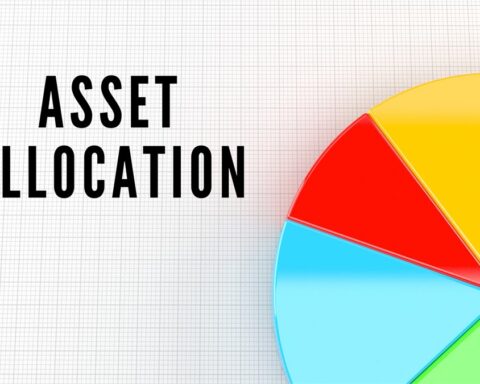In the face of market volatility, many investors have experienced significant losses, except for those who possess well-diversified portfolios, which have enabled them to minimize their downturns.
Today, we will delve into the subject of investors who have neglected the importance of diversification and find themselves holding imbalanced portfolios of market investments.
Given their funds being tied up in the market, is it too late for them to pursue proper asset allocation? Absolutely not.
In this article, we will present several asset allocation methods through which you can diversify your current portfolio and mitigate overall portfolio risks even during periods of market instability.
Diversification
If you have ever doubted the advantages of portfolio diversification, it is time to put those doubts to rest.
The year 2022 was characterized by market volatility and subsequent recovery. Stock prices were influenced by various factors, such as geopolitical developments in Europe and the introduction of economic packages by governments and the RBI. For example, the Union budget for 2022 was infrastructure and growth oriented, and the stock markets saw a jump when it was announced. On the other hand, the Fed rate hike by the US resulted in the Indian Rupee slumping and ending the year as the worst-performing Asian currency. Some foreign investment left India but the domestic investment increased. This level of volatility requires your portfolio to be diversified properly.
Before delving into portfolio diversification and asset allocation, let us first understand the distinction between diversification and hedging. This distinction is crucial because, during crises like a pandemic, hedging can be a counterproductive strategy. To grasp this concept, let us explore the notion of correlation.
Correlation
Correlation denotes the relationship between two variables. In the realm of investing, correlation refers to two securities that either move in the same direction or in opposite directions simultaneously.
- Example 1: Inflation rates and property rent. When inflation rates rise, commodity prices also increase, resulting in overall higher expenses. During such periods, rent prices also tend to escalate. Therefore, inflation rates and rents exhibit a positive correlation – as one increases, so does the other.
- Example 2: Interest rates and bond yields. Typically, when interest rates rise, bond yields decline and vice versa. Hence, they display a negative correlation.
- There is also a third category known as no correlation, wherein the performance of one variable has no impact on the other.
How Does Correlation Relate to Diversification?
When diversifying your investments, it is crucial to aim for investment avenues that exhibit no correlation with one another. This means that even if one investment experiences a decline, it will not affect the returns of other investments within your portfolio.
Many investors often confuse market diversification with hedging. Although hedging can also be advantageous, during times when the economy is stressed, hedging carries risks.
This is because securities tend to become more correlated than usual. Thus, if two securities normally exhibit a negative correlation in a stable market, they may become positively correlated during such periods. This could disrupt your hedging strategy. Hence, to mitigate risks, it is important to ensure diversification by investing in securities with no correlation.
Now, let us explore the tips for diversifying your mutual fund portfolio amidst the current market volatility.
Avoid Lump Sum Investments
Now that we understand the significance of diversification, the first step is to refrain from investing a lump sum amount. Although low market prices may appear enticing and tempt you to invest a large sum all at once, assuming that the market has reached its lowest point can prove counterproductive.
The markets are highly unpredictable, particularly given the trends in the last few years. Therefore, trying to time the markets by making a lump sum investment could result in substantial losses if the market continues to decline. Even if you have a significant amount to invest, it is advisable to invest gradually while closely observing the evolving situation.
Opt for Mutual Funds through Systematic Investment Plans (SIP)
SIPs, or Systematic Investment Plans, are inherently designed to navigate volatile markets. They ensure that you make a fixed investment at regular intervals, irrespective of market conditions. Consequently, over time, you benefit from Rupee Cost Averaging, which lowers your average purchase price and provides better opportunities for gains. SIPs also safeguard against entering the market at the wrong time.
SIPs serve as an excellent method of asset allocation and diversifying your portfolio without the risk of timing the market incorrectly. Through regular investments, you stand to benefit even if the market experiences further declines, as you would acquire more units for the same investment amount. With a long-term investment horizon, this can lead to substantial gains.
Consider Long-Term Equity Investments
Assuming that you are well-informed about several aspects of investment, including diversifying into low-correlation securities, embracing SIPs, and avoiding lump sum investments, the next crucial factor in diversification during market volatility is the investment horizon.
Volatile markets pose risks for short-term investors. Historical market performance indicates that while markets have always exhibited volatility, they have consistently recovered from crashes and major correction phases. Although the past performance of any investment does not guarantee future results, the inherent nature of the economy and markets suggests a tendency to rebound.
Embrace Diversification in Various Forms Through Prudent Asset Allocation
In investment circles, we refer to it as diversifying a diversified portfolio. Let’s assume that your asset allocation is that you allocate 40% of your portfolio to equity mutual funds, 30% to debt funds, 20% to stocks, and 10% to term deposits (note: this portfolio is not a recommendation). This represents diversification level 1.
Equity Funds Diversified Across Market Capitalizations
Prudent investing dictates selecting companies with robust fundamentals during market volatility. However, if your portfolio already heavily concentrates on large-cap or blue-chip stocks, it would be wise to explore funds that offer quality stocks in the mid-cap and/or small-cap segments.
Equity Funds Diversified Across Geographies
This aspect gains particular relevance in the present scenario. During a pandemic, certain regions suffer more severely than others. Consequently, businesses based in or reliant on those areas for resources, labour, or other essential aspects may encounter significant losses or struggle to recover. Conversely, areas that are less affected may witness quicker recovery and potentially generate substantial profits.
Hence, it is advisable to seek funds that invest in companies spanning the entire country to mitigate the impact of geographical concentration on your investment portfolio.
Equity Funds Diversified Across Different Market Sectors
Presently, most sectors have been adversely affected. While speculative investing may be tempting, a more prudent approach involves diversifying across essential service sectors such as banking, insurance, healthcare, etc. Look for sectors that have displayed resilience and possess the ability to recover swiftly once the economy rebounds.
Diversify Your Debt Investments
Often, investors tend to focus more on equity when it comes to diversification. However, it is important to extend diversification to debt investments as well. Numerous debt funds are available for diversification, including income funds, dynamic bond funds, liquid funds, credit opportunities funds, short-term funds, and ultra-short-term funds.
Analyze your debt portfolio and invest in funds that exhibit no correlation with your existing investments.
Conclusion
If you believe that the markets are currently volatile but will eventually recover, and you are willing to stay invested, resist the urge to sell your investments and incur losses. Instead, concentrate on constructing a diversified portfolio with good asset allocation capable of capitalizing on the current market conditions and generating remarkable returns when the markets rebound. You can also look at investing in multi-asset funds to achieve diversification.
One last reminder – always keep in mind the three pillars of successful investing: your financial goals, risk tolerance, and investment horizon. Whether it pertains to redeeming investments or entering the market when it hits rock bottom, ensure that you adhere to these pillars.
Disclaimer: Mutual Fund investments are subject to market risks. Please read all scheme-related documents carefully before investing.








